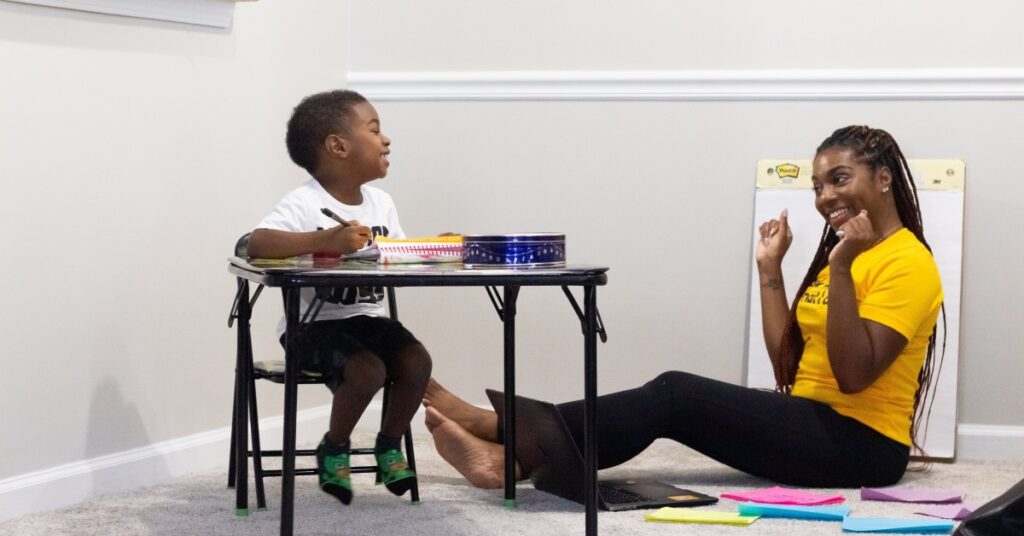
Becoming a Teacher in Los Angeles
Los Angeles County has over 10 million residents with 1.5 [...]

In the fall of 2000, minority students represented 39 percent of the student population in K-12 public schools in America. That proportion increased to 54 percent by 2020 and is projected to approach 60 percent over the next decade.
Growth has been fastest among Hispanic/Latinx students; the group increased from 16 to 26 percent of the public school population between 2000 and 2015, and should reach 29 percent by 2027. Asian/Pacific Islander students increased slightly over the same period, from 4 to 5 percent. Black students decreased slightly, from 17 percent to 15 percent.
To what extent do educator and school-leadership demographics mirror student populations? Not enough, most would have to conclude; school teachers are far less diverse than their students. This has a significant impact on many areas within the school setting and the community at large, because:
A more diverse teacher workforce could provide a key to unlocking the success of all students in the education system, especially students of color. Unfortunately, some educational research indicates continued barriers to recruiting and retaining teachers of color, contributing to the lack of diversity among school educators.
According to the National Center for Education Statistics (NCES), about 79 percent of teachers were white in the 2017-18 school year, dropping five percent from data collected in the 1999-20 school year. Nine percent were Hispanic/Latinx, seven percent were Black, two percent were Asian or identified with two or more races, and one percent were American Indian/Alaska Native.
Gender demographics demonstrate a similar disparity. In the 2017-18 school year, women made up 76 percent of the teaching workforce, primarily within elementary school classrooms (at 89 percent). Women constitute 64 percent of secondary school teachers (up five percent from the 1999-20 school year).
| University and Program Name | Learn More |
|
New York University:
Master of Arts in Teaching
|
|
|
Merrimack College:
Master of Education in Teacher Education
|
|
|
American University:
Masters in Education Policy and Leadership
|
The numbers clearly show the disparity between minority students and minority teachers, likely with deleterious results. Research indicates that minority students are more likely to have higher standardized test scores, improved attendance, and lower suspension rates when they have at least one same-race teacher. These disparities also create unequal access to resources, support, guidance, and accelerated learning programs.
The student achievement gap, more noticeable in lower-performing schools, primarily affects students of color and students living in poverty. Teachers of color tend to place higher expectations on minority students than do white teachers, which has a ripple effect on many aspects that impact student academic performance.
Low-performing schools present challenges, including a lack of resources, smaller budgets, teacher burnout, and higher student-to-teacher ratios, and Black teachers are more likely to work in low-income schools or districts with a predominately Black student population. These challenges, unfortunately, lead to higher teacher turnover rates, highlighting the need for more resources for marginalized communities.
Minority teachers positively impact minority student performance in the following ways that help chip away at the achievement gap:
In addition, a more diverse teacher workforce helps reduce suspension rates and chronic absenteeism among minority students. One study found that minority students in classes with same-race teachers were less likely to demonstrate behavioral issues. When education reform implemented zero-tolerance policies, policymakers did not consider how minor infractions that led to missed days in school (i.e., out-of-school suspension and expulsion) were more common among students of color, thus widening the achievement gap.
Diverse teachers can help combat this through sharing lived experiences, instilling higher expectations, and helping minority students realize their potential.
Representation among school educators matters, especially as the student population grows more heterogeneous. A diverse teacher workforce provides minority students role models, leading them to imagine a brighter future for themselves. Johns Hopkins University and American University researchers found that Black students who’d had just one black teacher by third grade were 13 percent more likely to enroll in college—and those who’d had two were 32 percent more likely.
Minority teachers also serve as allies, holding minority students to higher yet attainable standards, offering guidance via mentoring opportunities, and championing their success through every step. So often you hear stories from students of color who pinpoint the teacher who helped shape them into the adult they became. Some first-generation college graduates credit teachers with inspiring them to pursue higher education when it may have never been considered an option based on family history. These possibilities and success stories significantly affect minority students, more often black male students, when teachers take the time to overlook unconscious bias and instead see the potential—most of which comes innately to same-race teachers.
Minority teachers bring cultural awareness and equitable education to the forefront. This benefits all students, white as well as nonwhite. Although studies show that public school students often attend schools where at least half of their peers are of the same ethnicity, that trend has decreased over the last two decades. White students dropped from 91 percent more likely to attend a school with their peers in 1995-96 to 79 percent by the 2018-19 school year, and for Black students that figure decreased from 51 percent to 42 percent. (Hispanic students slightly increased from 53 percent in 1995-96 to 56 percent more likely in 2018-19.)
As students become more exposed to diverse classroom settings, minority teachers play a significant part in helping all students operate within a diverse nation. Almost 80 percent of the current teacher workforce identify as white, with most educators being white females. That’s too bad, because teacher diversity benefits all students by:
Teacher diversity is not solely beneficial for minority students. Cultivating a welcoming and inclusive school environment also benefits non-minority students by increasing multicultural awareness and decreasing bias based in ignorance.
Amid teacher shortages and low retention rates, the goal of recruiting and retaining quality educators presents challenges. The most impacted schools tend to have higher minority student populations.
So, how can schools boost minority representation and retain teachers of color? One solution suggests hiring more principals of color. Recent studies show that having Black principals increases the likelihood of hiring and retaining Black teachers.
Nearly 80 percent of K-12 principals in public schools are white, which reveals the lack of diversity in leadership. Out of the remaining principal makeup, 11 percent are Black (only two percent are black males), nine percent are Hispanic/Latinx, and less than one percent are Asian, Pacific Islander, or identify with two or more races. Yet research indicates that principals of color significantly impact teacher retention, student achievement, and inclusive and equitable learning environments. It’s hard not to conclude that America needs more principals of color.
New principal preparation programs such as the National Aspiring Principals Fellowship seek to rectify this situation by building the pipeline for the next generation of future leaders who better reflect the diverse students they serve. This program, developed by New Leaders, formed a partnership with Morehouse College and Clark Atlanta University, two preeminent historically black colleges and universities (HBCUs), to provide a pathway to principalship through a one-year Principal Certification track or 16-month Master + Certification track.
In addition, teacher preparation programs work to build a more diverse talent pool of candidates to boost minority representation in the classrooms. The reality of increasing teacher and leadership diversity in schools won’t happen overnight. Fortunately, programs exist to build a robust applicant pool that should benefit students of all racial, social, and economic backgrounds.
Questions or feedback? Email editor@noodle.com

Los Angeles County has over 10 million residents with 1.5 [...]
Categorized as: Education Administration, Teaching, Education & Teaching